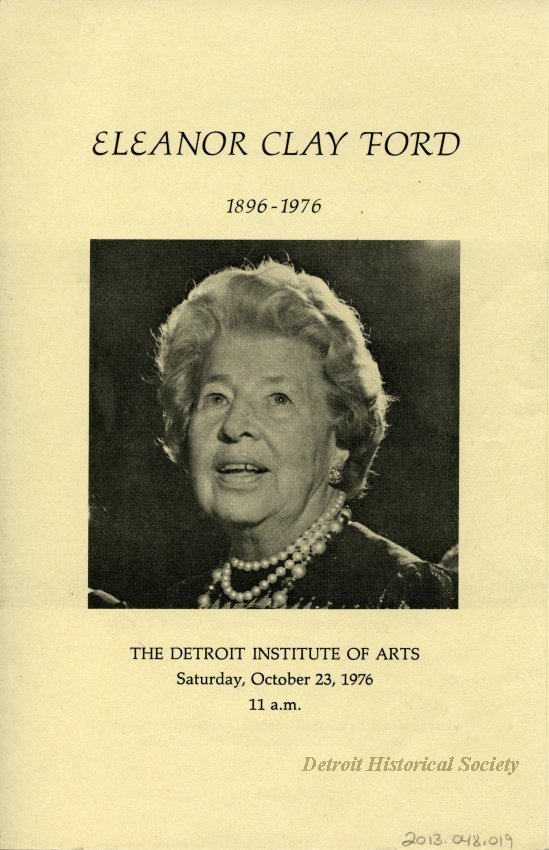Eleanor Clay Ford contributed greatly to the cultural community of Detroit. Not only was the house that she lived in with her husband, Edsel Ford and their four children, left intact with an endowment “for the benefit of the public,” but the Detroit Institute of Arts (DIA) was a principle recipient of her beneficence.
Born on June 6, 1896 to William Clay and Eliza Hudson in Detroit, Eleanor’s schooling took place at the Detroit Home and Day School, now University Liggett School. Prior to her marriage she expressed interest in social work, teaching at a settlement school.
She was a niece of Detroit’s wealthiest merchant, J.L. Hudson, with whom she and her widowed mother lived. After being courted by Edsel Ford, only son of Henry Ford, they were married at her uncle’s home on Boston Boulevard in 1916.
Eleanor Ford had many charitable interests but perhaps her most intense loyalty was to the DIA. She and Edsel received an art history education from the DIA’s first director, William R. Valentiner, traveling around Europe with him to view and study the great masterpieces and objets d’art. Eleanor was also influenced by her cousin Robert Hudson Tannahill, one of the DIA’s most significant donors, in her and Edsel’s purchase of art. She was a major contributor to the construction of the DIA’s south wing, and in 1976 she created the Department of African, Oceanic and New World Cultures with a $1 million donation.
As a major stockholder in the Ford Motor Company, her influence was perhaps most strongly felt when she is said to have pressured Henry Ford to make his grandson, Henry Ford II, president in 1945, two years after the death of Edsel, who had held that position.
Eleanor and Edsel had four children, Henry II, Benson, Josephine and William. In 1926 the couple commissioned architect Albert Kahn and landscape architect Jens Jensen to design a Cotswold style home and environment for their family on the shore of Lake St. Clair in Grosse Pointe Shores. When Eleanor died, on October 19, 1976, the house and grounds were left with an endowment for the education and pleasure of future generations. The house today is a National Historic Landmark.
